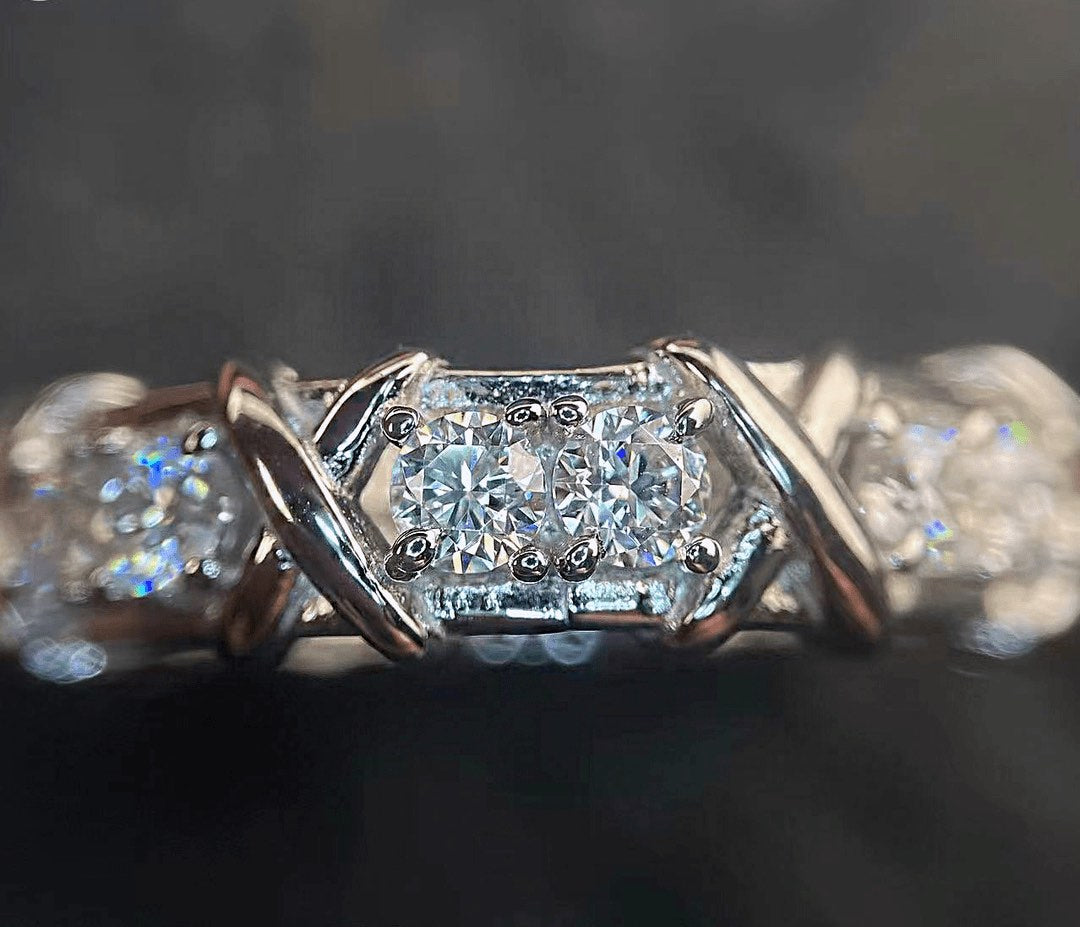
Is cubic zirconia considered fake?
Share
In the world of gemstones and jewelry, few questions spark as much debate as whether cubic zirconia (CZ) should be considered "fake." This crystalline material has found its place in the jewelry market as a diamond simulant, but its classification isn't as straightforward as many assume. Understanding cubic zirconia's properties, production, and market position provides clarity on this nuanced topic.
What exactly is cubic zirconia?
Cubic zirconia is a synthetic crystalline material made primarily of zirconium dioxide (ZrO₂). While the natural mineral baddeleyite contains zirconium dioxide, the cubic crystal structure needed for gem-quality appearance only occurs through laboratory synthesis under carefully controlled conditions. The result is a clear, colorless material with remarkable optical properties.
Commercially produced since the 1970s, cubic zirconia rapidly gained popularity as an affordable diamond alternative. The manufacturing process involves melting zirconium oxide powder with stabilizers at temperatures exceeding 4,700°F (2,600°C), then allowing the material to crystallize. This synthetic process enables consistent quality control and allows for the production of various colors by adding different metal oxides during formation.
The diamond comparison: Similarities and differences
Cubic zirconia shares several visual characteristics with diamonds, which explains its popularity as a diamond simulant:
- Appearance: To the untrained eye, a well-cut cubic zirconia can look remarkably similar to a diamond, with comparable brilliance and fire.
- Hardness: At 8-8.5 on the Mohs scale, cubic zirconia is reasonably durable (though less so than diamond's 10).
- Clarity: Most cubic zirconia is flawless, unlike natural diamonds which typically contain inclusions.
However, significant differences exist:
- Optical properties: Cubic zirconia has higher dispersion (fire) than diamond, creating more colorful light reflections.
- Specific gravity: CZ is approximately 1.7 times heavier than a diamond of equivalent size.
- Thermal conductivity: Diamonds conduct heat efficiently, while cubic zirconia is a thermal insulator—a property jewelers use in diamond testing devices.
- Longevity: Over time, cubic zirconia may develop a cloudy appearance with wear, while diamonds maintain their clarity.
Is "fake" the right descriptor?
Whether cubic zirconia should be considered "fake" depends largely on context and representation:
When cubic zirconia is not "fake":
- When properly disclosed and marketed as cubic zirconia
- When appreciated for its own qualities rather than as a diamond substitute
- When used intentionally for its unique properties and affordability
When cubic zirconia could be considered "fake":
- When misrepresented or sold as a diamond
- When used deliberately to deceive consumers about a jewelry piece's value
- When marketed using deliberately misleading terminology
Most gemologists and jewelry professionals prefer terms like "diamond simulant" or "diamond alternative" rather than "fake diamond." This terminology acknowledges that cubic zirconia is a legitimate material with its own characteristics, while still recognizing it's not a diamond.
The ethics of cubic zirconia
The ethical dimension of cubic zirconia use centers on transparency. When merchants clearly identify cubic zirconia jewelry as containing CZ stones, they're operating ethically. Problems arise only when misrepresentation occurs.
In fact, cubic zirconia offers several ethical advantages:
- Affordability: CZ makes diamond-like aesthetics accessible to those with limited budgets.
- Conflict-free: As a synthetic material, cubic zirconia isn't subject to the ethical concerns of conflict or "blood" diamonds.
- Environmental considerations: Lab-created cubic zirconia doesn't require mining, which can cause environmental damage.
Cubic zirconia in modern jewelry markets
Today's jewelry market has evolved beyond simple diamond vs. cubic zirconia comparisons. Several factors have shifted consumer perspectives:
- Growing acceptance of alternatives: Modern consumers often prioritize value, sustainability, and ethical sourcing over traditional prestige.
- Technological improvements: Advanced manufacturing techniques have improved cubic zirconia's appearance and durability.
- Designer adoption: Many legitimate jewelry designers incorporate cubic zirconia into fashionable pieces, elevating its status.
- Practical applications: Some consumers deliberately choose cubic zirconia for travel jewelry or everyday wear, reserving more valuable pieces for special occasions.
Making an informed choice
When deciding between cubic zirconia and diamonds, consumers should consider several factors:
- Budget: Cubic zirconia costs a fraction of diamond prices—typically $20-100 per carat versus thousands for diamonds.
- Longevity expectations: While diamonds are essentially forever, cubic zirconia may need replacement after years of regular wear.
- Symbolic significance: For some, the tradition and symbolism of a diamond hold irreplaceable meaning.
- Practical considerations: For fashion jewelry or pieces subject to potential loss or damage, cubic zirconia offers peace of mind.
Conclusion
The question "Is cubic zirconia fake?" overlooks the complexity of modern gemstone markets. While cubic zirconia is indeed a diamond simulant and not a natural gemstone, labeling it simply as "fake" diminishes its legitimate place in the jewelry world.
Rather than viewing cubic zirconia through a binary authentic/fake lens, considering it as an alternative material with its own merits provides a more accurate perspective. The true measure of cubic zirconia's legitimacy isn't in comparison to diamond but in the transparency with which it's represented and sold.
For consumers, the choice between diamond and cubic zirconia shouldn't be reduced to real versus fake, but rather a decision based on individual priorities, values, and circumstances. When selected intentionally and represented honestly, cubic zirconia serves as a practical, ethical, and accessible option in the diverse landscape of modern jewelry.
